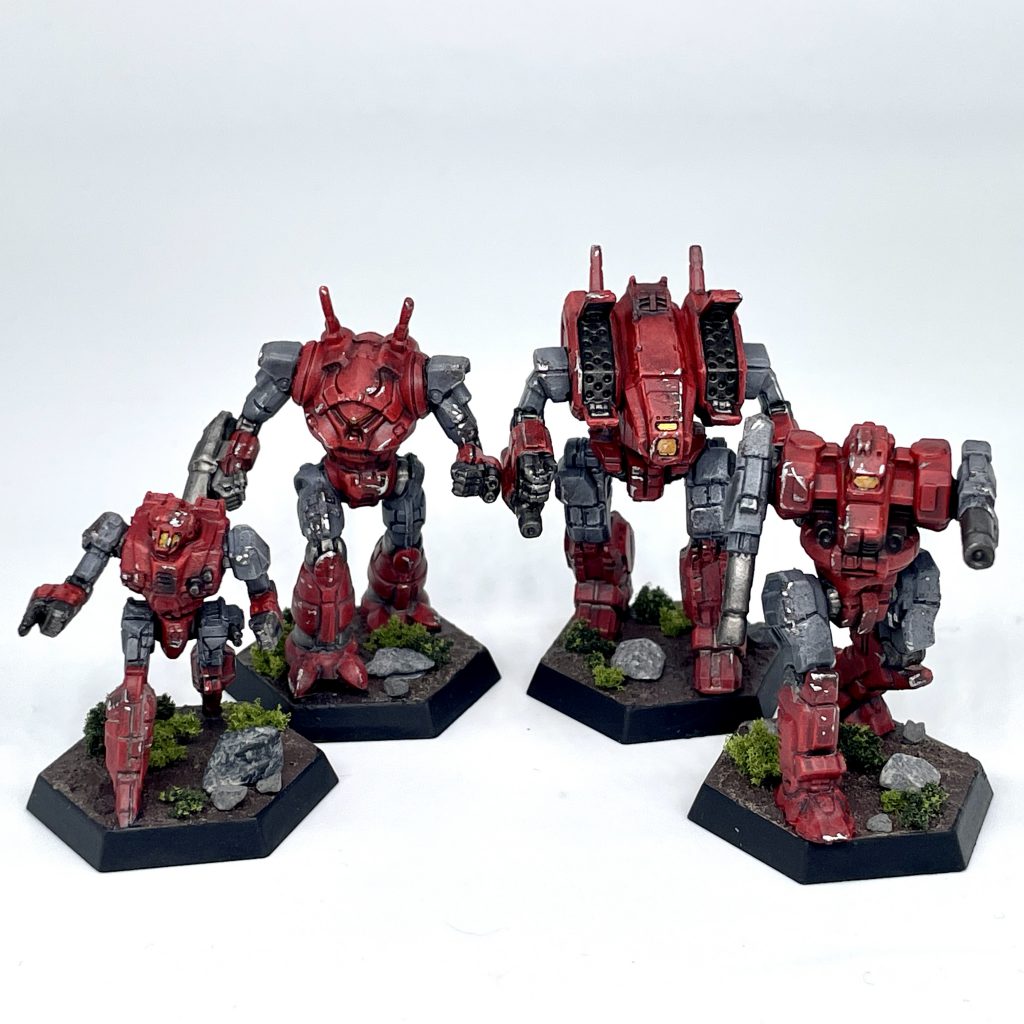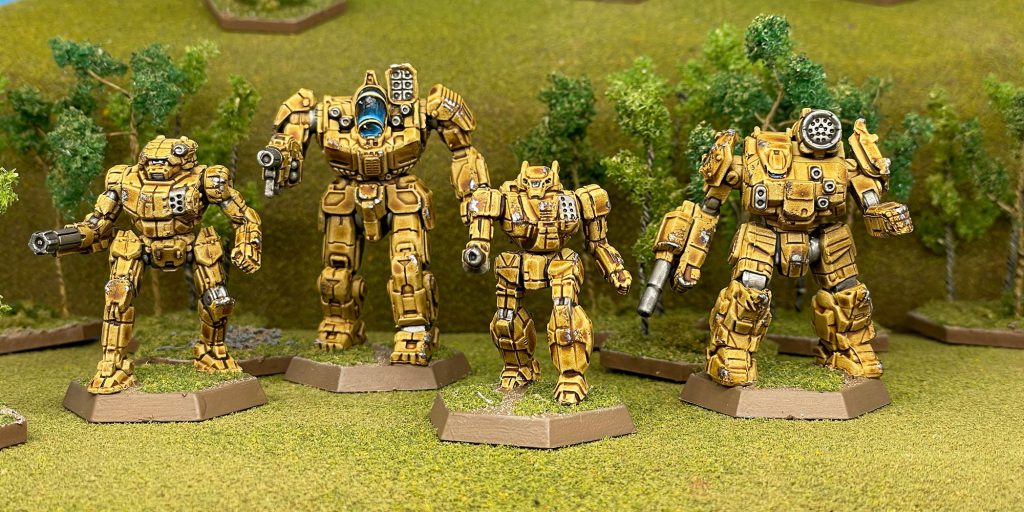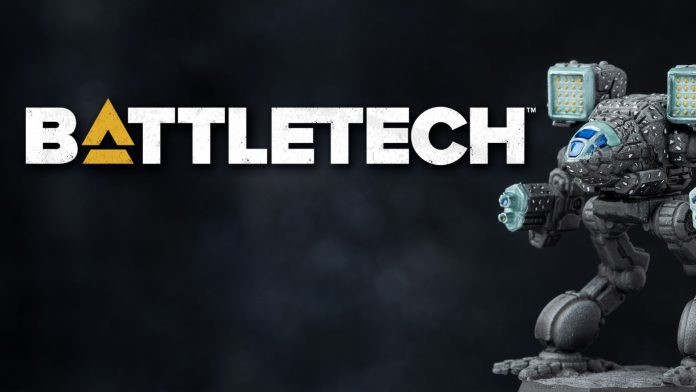Battletech is an excellent game, but it suffers from a fairly major issue that basically no other wargame suffers from. There is no standard game size of any kind, to the point where people can develop wildly different views on the game’s balance depending on what they consider a standard game. On top of that, a lot of people play with restrictions or strange ideas about the “meta” that can skew their perceptions even further. One of the most common questions we receive is some variation on “How much BV is a standard game” and “How big of a game should I play” because the game essentially does not tell you. This has spurred on the creation of what I am calling the “Goonformat”.
The Goonformat
The Goonformat is a set of list building rules and a standard game size wrapped together. The idea is to provide a standard format for club games/pick up games and to reduce the amount of homework a player needs to do before sitting down to play the game. The Goonformat will be revised occasionally.
Game Size
Goonformat games come in two sizes. All BV costs must be calculated using Master Unit List, including the price of skill increases. If a player chooses to use Semi Guided LRMs, C3 Networks, or any other equipment which effects BV, they have to calculate the BV cost for the equipment manually and add it to the MUL BV total. 5k BV is the smaller size, and 10k BV is the larger size. Players should build a list for both depending on what other players have or are willing to play. Most 10k BV lists can be halved down into a 5k list. 5k games should be played on 2 map sheets, arranged with their long sides touching. 10k games can either be played on 2 map sheets laid out as above, or 4 map sheets laid out in a square, space permitting.
Force Construction
Goonformat Forces use the following force construction rules.
For every 5000 BV in the game, each force must contain at least 2 Battlemechs or Industrial Mechs. These are referred to as your “Compulsory” mechs. In addition, for every 5000 BV in a game, you may include 4 additional units on top of your Compulsory mechs. These may either be Battlemechs, Industrial Mechs, or Support Units. A Support Unit is defined as a squad of Battle Armor, a unit of Conventional Infantry, a Combat Vehicle, a Protomech, or any other non-Battlemech unit. Artillery and Aerospace units may only be included with the permission of your opponent due to their complexity. In addition, Ultra-heavy Protomechs (a Protomech massing more than 10 tons) use two unit slots each due to the extreme power of units such as the Boggart and Sprite. If you bring a Support Unit, you are expected to know the rules for that Support Unit.
Unit Skills
Unit skills are capped and may not be improved beyond a 2, nor downgraded beyond a 6. This applies to Piloting, Gunnery, Anti-Mech, and any other skill types that a unit may have. In addition, if a unit has 2 skill values, they cannot be further than 2 apart. For example, a Battlemech could be skill 2/2, 2/4, 3/5, or 4/4, but not 2/5 or 3/6. Protomechs cannot have a better gunnery skill than 3.
Factions
At this moment there are no faction restrictions or rules in the Goonformat.
Unit Availability
All units with a canon, officially released record sheet are legal for use, regardless of era. Custom variants and custom mechs can be used with your opponent’s permission, but are not recommended for standard play.
Special Character Variants
Special Character Variants, such as the Bounty Hunter Marauder, are only allowed to be taken a single time each in a Force. You could have a Bounty Hunter Marauder and a Griffin “Sparky”, but not two Bounty Hunter Marauders. Special Character Variants are marked separately on Sarna as “Custom Variants”.
Special Munitions
Special Munitions from Total Warfare may be used. You are allowed to swap in special ammunition after seeing your opponents list, but before any units are deployed on the board. The exception is Semi-Guided LRMs, as these have a BV cost and must be taken and declared when your list is constructed.
Commander
One unit on your force must be declared the commander, and named. This will serve a purpose in some scenarios.
Base Scenarios
Included below are a set of 6 simple scenarios for use with the Goonformat. I cannot promise that they are all perfectly balanced, and they are subject to revision, so feedback is encouraged to smooth them out. A scenario may either be chosen, or rolled on a D6 before deployment.
Objective Markers
An objective marker does not block movement. An objective marker occupies a single hex. A unit counts as being in range of an objective marker if it is within 3 hexes of it. An objective marker is controlled if there is a unit in range of it. If units from more than one player are within range of an Objective Marker, the side with the higher total Tonnage within range of the Objective marker is in control of it. If the total Tonnage is tied, then no one is in control of the Objective Marker. Conventional Infantry and Battle Armor count as 50 tons for the purposes of objective control.
Standard Deployment
To avoid having to repeat this every time, the standard pattern for deployment is as follows. Both players roll off, the player who loses selects their deployment zone and places one or more units in their deployment zone, subject to the rules on unequal numbers of units. The next player then places one or more units in their deployment zone, and the players alternate in this fashion until all units are deployed. Once all units are deployed, players roll initiative, and the first turn begins.
1: Frontline Combat
Both forces deploy on the long table edges, a single hex in.
The game runs for 15 turns.
Victory is determined by the total BV destroyed by each player. Whoever destroys the most BV wins. A mech that leaves the board, either with its own movement or by being pushed/displaced, only counts for half as much BV as if it was destroyed normally.
2: Objective Raid
Place one Objective Marker at the center of each map sheet.
Both Forces deploy on the long table edges, a single hex in.
The game runs for 15 turns.
Victory is determined by Victory Points. A side gains a single victory point at the beginning of each turn for every objective marker it controls. The side with the highest Victory Point total at the end of the game wins.
3: Headhunting
Both players roll 2d6, with the player who rolled higher being the Attacker, and the other player the Defender.
The Defender deploys within 4 hexes of the center of the battlefield, setting up their Commander first.
The Attacker splits their force into two halves, keeping BV as equal as possible. The larger half deploys within 1 hex of a long table edge.
The game runs for 15 turns.
The Defender’s Commander starts the game powered down and may not take any actions until turn 3. It does not count as Immobile. The Commander receives a free increase of a single point in any of their skills.
On the 4th turn, the remainder of the Attacker’s forces may be deployed on any board edge and act as normal that turn
Victory is determined by the status of the Commander. If the Commander survives until the end of the game, the defender wins. If the Commander is destroyed, the Attacker wins.
4: Salvage
One Objective Marker is placed in the center of the board.
Both players deploy on the narrow table edges, a single hex in.
The game runs for 15 turns.
The central Objective Marker is a Salvage Mech carrying valuable loot. Each turn, the player in control of the Objective Marker at the beginning of the turn may move it as if it was a Mech with movement profile 4/6/0. The Salvage is far too valuable to destroy, so the Objective Marker may not be targeted.
The player with control of the Objective Marker at the end of the game wins.
5: Dropship Assault
Players alternate selecting map sheets until all are selected. Each player may deploy within 3 hexes of the center of any map sheet they chose.
The game runs for 15 turns.
Victory is determined by the total BV destroyed by each player. Whoever destroys the most BV wins. A mech that leaves the board, either with its own movement or by being pushed/displaced, only counts for half as much BV as if it was destroyed normally. The Commander is worth an additional 500 BV.
6: Glory to Marik
Both players secretly select one of their Battlemechs to be a Traitor. Players roll off and the winner may select to deploy as if they were playing Dropship Assault or Frontline Combat.
The game runs for 15 turns.
You may not deliberately target your own traitor with any attacks, but other blatantly suicidal actions are encouraged, such as ordering him to charge an Atlas or to go swim around in a swamp for a while.
Victory is determined by the total BV destroyed by each player. Whoever destroys the most BV wins. A mech that leaves the board, either with its own movement or by being pushed/displaced, only counts for half as much BV as if it was destroyed normally. The Traitor is worth his full BV, plus 500, to his own side if he is destroyed, and worth no BV to the player who destroyed him.

Scenario Pack 1
The following are additional scenarios added following some additional playtesting. Feedback on these would be appreciated in the comments. If you wish to randomize these in with the base scenarios, roll 1D6, on a 1-4 you use the base set, on a 5-6 you use the Scenario Pack. Roll 1d3 to select a scenario from this pack.
1: Breakthrough
Before deployment, both players roll off. The winner is the Attacker for this scenario.
The Attacker selects one of the narrow table edges. This is their home edge. The defender’s home edge is the other narrow table edge.
The Attacker MUST deploy first. Their deployment zone is a single hex in on their home edge. The Defender’s deployment zone stretches from their home edge to the center of the battlefield.
The game runs for 15 turns.
The Attacker may move off of the Defender’s home edge voluntarily. If they do so, they score that unit’s BV as victory points. They also receive victory points equal to the BV of any unit they destroy. The Defender receives victory points equal to twice the BV of any unit they destroy, and 300 victory points for every enemy unit remaining on the table at the end of the game.
2: Blake’s Will
Set up a single Objective Marker in the center of the battlefield. Each player then takes turns placing 2 more objective markers each, exactly 7 hexes away from it in any direction.
Before deployment, both players roll off. The winner is the Attacker for this scenario.
The Attacker MUST deploy first. Their deployment zone is a single hex along two table edges of their choice. The Defender’s deployment zone is within 2 hexes of any objective marker.
The game runs for 15 turns.
The Objective Markers represent scientists or technical data. The Attacker, if they are in control of any Objective Markers, will destroy them, gaining 10 VP for the first one they destroy, 8 for the second, 6 for the third, 4 for the fourth, and 10 for the final Objective Marker destroyed. At the end of each turn, the Defender scores 1 VP for each Objective Markers that is not destroyed.
3: Gunslinger
Before deployment, both players roll off. The winner is the Attacker for this scenario.
Place an Objective Marker 5 hexes away from one table edge. This will be the Defender’s home edge, with the Attacker’s home edge being opposite them. This Objective Marker represents an ammo dump, supply depot, dropship carrying retreating comrades, a fallen loved one, or some other object of great value to the Defender.
The game runs for 15 turns.
The Defender must deploy their heaviest mech within 1 hex of the Objective Marker. In the event of a tie, the Defender may choose which mech is placed. This mech is their Gunslinger. The Gunslinger gains an increase of two points to all of their skills, which may take them beyond the normally allowed limit of 2 for unit skills. This would bring a 4/5 pilot down to 2/3, or a 3/4 pilot down to 1/2. The remainder of the Defender’s force is not deployed immediately. The Attacker deploys as normal within one hex of their home edge.
On the 4th turn, 2 of the Defender’s units arrive within one hex of their home edge, and may act as normal. Every 2 turns following this (so on turns 6, 8, 10, 12, and 14), 2 more defending units arrive.
As long as the Gunslinger is on the battlefield, the Attacker cannot control the Objective Marker, regardless of where on the field the Gunslinger is.
The Gunslinger is not allowed to move into a position where no enemy units can see them intentionally.
If the Attacker has control of the Objective Marker at the end of the game, they win. If the Defender does, they win.

Wrap-up
I hope this is useful as a tool to organize games and provide a more standard set of rules for playing this game. I really would appreciate feedback on any aspect of this, as, while I have playtested this, I still am not 100% sure about everything in it. Also, let me know if I just missed anything, as I tend to do that sometimes.
Format Change Log
1.1: Removed Industrial Mechs from Support Vehicle list, folded in with Battlemechs.
1.2: Clarified that yes, you do have to pay for C3 computers and Semi Guided LRMs.
1.3: Extended turn limits to 15 turns following additional playtesting. Protomechs can no longer have a gunnery skill better than 3. Clarified objective marker size. Changed scoring on Objective Raid. Shortened time that the Commander was inactive in Headhunting.
2.0 Revised force construction, removed support unit slots and folded them in with standard unit slots, clarified wording on several scenarios, added Scenario Pack 1.


